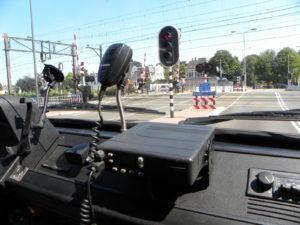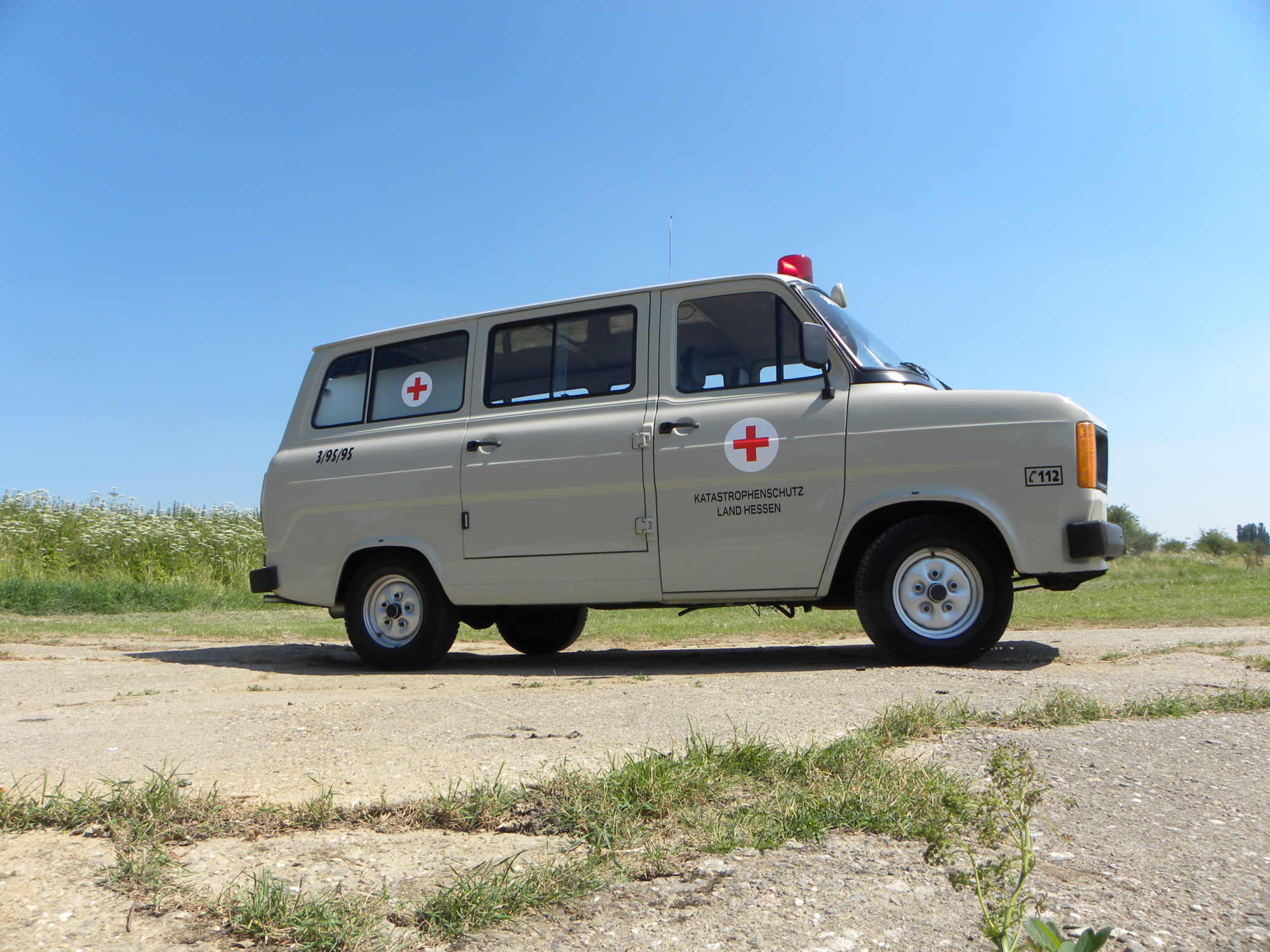The first Transit dates from 1953. They were the start of a race of cars that lived from generation to generation of heavy lives and spent long days in the hands of small self-employed workers, contractors, dairy farmers, parcel delivery services, small transporters, furniture dealers, musicians, bands, government services, such as fire trucks, ambulances, as minibuses and as tools for people who had anything to carry around.
They lived like the Greek donkeys: they had to work hard for little food and got a beating. Owners thought that "Max. Load capacity 'was the name of someone who had something to do with Ford. The first Transits were real company cars made cheaply and without much attention to (driver's) comfort. The specimens that ended up with government services were maintained and generally had an easier life. But they rust with just as much conviction.
565 Transits
In the early years of 80, the Bundesamt für Bevökerungsschutz und Katastrophenhilfe, BBK, 565 purchased Ford Transits KTW4 (Kranken Tragerwagen, 4- Sick and wounded transporter for 4 persons) for aid organizations involved in disaster relief.
They had 1.954 cm³, 77 hp, blocks, one flashing light, Starktonhörner (siren). The Transits were also available as a "Notarzt" car. Then they were a few hundred kilos lighter and next to one stretcher a four-seater treatment room plus a lot of first aid stuff on board.
These Transits were intended as Notartzt cars for the 'Katastrophenschutz', so to speak, the counterpart of our 'Civil Protection Population'. Our 'Notarzt wagon' with its '112' sticker, is in any case a fantastic example that doing nothing keeps young.
The long wheelbase Transit with standard roof, wide side door and full tailgate plus its two liter four cylinder in line was adopted by Lorenz Groters after a less successful adventure with another Ford. He deliberately went on a bus chase. He had already looked at some really bad copies when he came across his Notartzt copy. The Transit is not just any Transit with some stickers.
It is - still always - fully equipped with all on-board tools, plasters, breathing equipment and conditions for repairing and transporting patients. In addition, quite a few changes have been made that are structural. The stretcher platform at the rear, for example, is seriously welded in and the parking heater must also keep the store comfortable in winter when the Ford is not on the road.
A fully functioning siren unit and a working flashing light are also nice options
There is a zipper in the canopy to access the rotating beacon from the inside. In order not to argue with the police, the Ford now has a red instead of a blue cap on the flashing light and the siren is not unnecessarily played with. In the front, in the immaculate interior, we find three seats and a dashboard with communication plus the operation of the siren, the flashing light and the parking heater.
All that beauty led the previous owner not to execute his nasty plans ...
He wanted to convert the Transit into a camper. Fortunately, he came to his senses before throwing away or loosening all the unique equipment and components of the ex Katastrophenschutz Ford. Because in its original condition, the stretcher carrier in the butt is a welded construction. And we've seen that kind of unwholesome amputations happen more often in camper land. Not to mention the now so hip 'Food trucks' where creatives for 100% quasi nostalgia cheering for the sacrifice of authenticity.










Hello Thijs, That's right. But in these posts, we have to do "the story" in 500 words. And then you get a kind of extracts from a history. We hope they make you so curious that you subscribe to AutoMotorKlassiek because it contains long stories. And such a subscription is dirt cheap!
The first Transits date from 1953! Shouldn't that be 1963 or a few years later? The predecessors of the Transit date back to around the early 1s, the Thames built in England and the German Ford Cologne / Taunus> Both excellent delivery vans with good road holding and therefore formidable faster and more economical competitors of the VW TXNUMX.